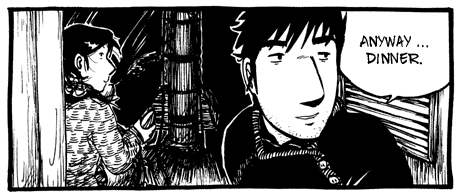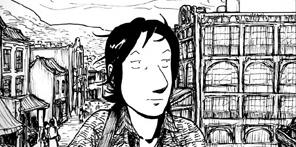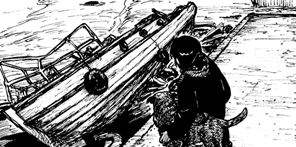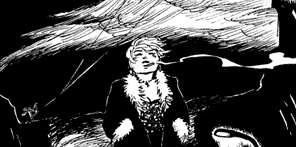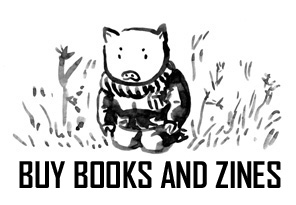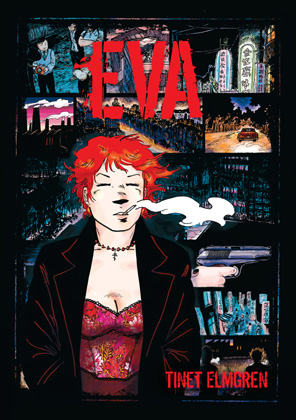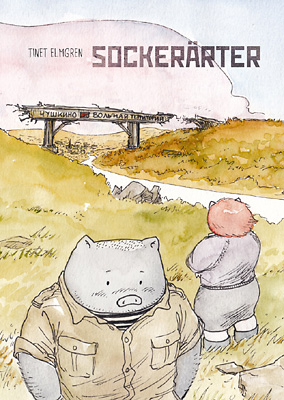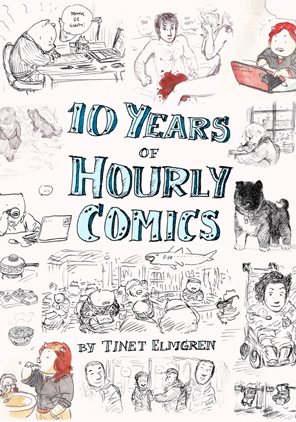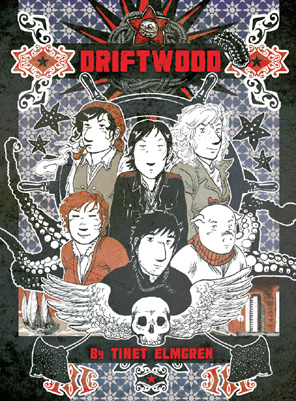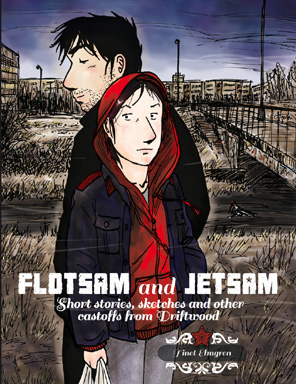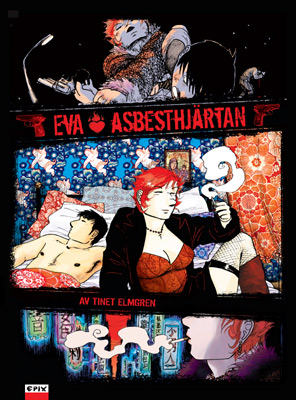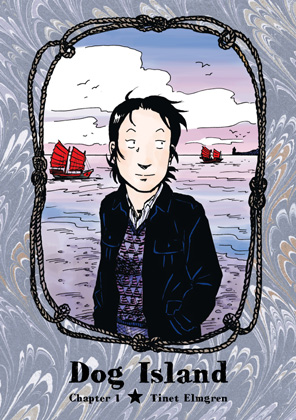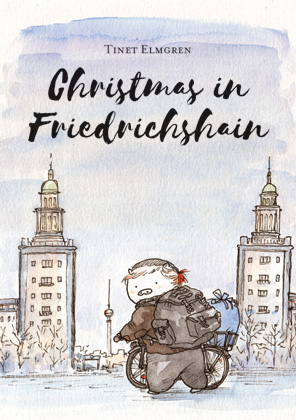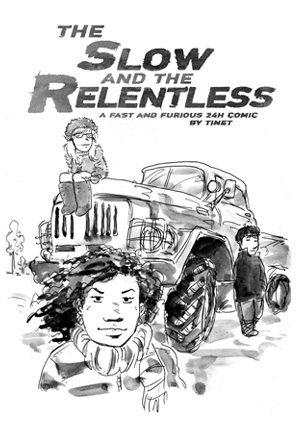Drawings – child pornography or not? As of today, it’s slightly less arbitrary in Sweden.
Remember the case with the Swedish comics expert who was charged with possession of child pornography in 2010? He was sentenced to fines in the two lower instances – the District court and the Court of appeal – and appealed both times, but today we got the news that the Supreme court has acquitted him.
The Supreme court still signals that the law as it is written today is okay. It deemed that 38 of the 39 allegedly pornographic drawings were in fact not child pornography, “since they are fantasy characters that cannot be mistaken for real children”. But the Supreme court still thought that one of the drawings is child pornography, because it was “realistic” (or “reality-like” – the Swedish word is a bit more ‘real’ than the English word) – however, it deemed that his possession of this drawing was defensible, since he is an expert on Japanese comics and it was one of thousands of other graphics on his hard drive.
Perhaps the public will never know exactly how realistic a drawing has to be to be child pornography, because it’s illegal to show it. If it is “photorealistic” – almost or as detailed as a photograph – it would perhaps make some sense. The sentence refers to the EU directive 2011/93/EU, which aims to criminalize only images that “reproduce reality”.
However, expert witness Fredrik Strömberg, one of the few people who have seen all the graphics in question, states that the 39th drawing was not “very much more realistic than any other”, only “drawn in a slightly more European style”.
So, if this one drawing is just a little bit more realistic than the “huge eyes – tiny mouth” commercial kids’ manga style, it’s still extremely difficult for artists and readers to know where the line is. It’s still up to the justice system to arbitrarily judge whether a drawing is child pornography or not.
Still, I’d say the threshold has become a bit higher – after this sentence, it’s probably not quite as unpredictably easy anymore to get accused of possessing or spreading child pornography in the form of drawings. The law has gotten a bit closer to “common sense”.
It would of course be even better if there could be a clear line – for example, if all drawings would be legal, since there are no real persons in them, while photos and videos of actual underaged people would be illegal. Hopefully this sentence is a step in the right direction.
DRIFTWOOD CH. 8 P. 24
YES IT’S THE PEDOPORN COMIC
For all non-Swedes: I’ve used this comic and future events in it as an example of why the very harsh and ambiguous Swedish child pornography law, which basically says that looking at drawings of characters under the age of 18 in “sexual situations” is illegal, should be revised … Here is a drawing I made last summer when the topic first flared up, and here is an opinion piece I co-wrote for the newspaper Aftonbladet, which was published today. The latter is all in Swedish, sorry. Willie’s sign says, “I want to have sex, too!”, and Aeron’s, “I’m not a paedophile” …
Click the picture to go read.
* * *
58 down, 29 to go. V`(oo)´V
Den svenska barnpornografilagen och vad seriefigurer tycker om den
Klicka här för att läsa vidare / se barnporr som jag har ritat. (Ja, varsågod och polisanmäl mig!)
!!!OBS! Varning för massiva spoilers om man följer min serie Drivgods…!!!
.
(The Swedish child pornography law and what comics characters think about it
Click here to continue reading.
!!! Warning! Massive spoiler warnings for those who are following my comic Driftwood … !!!)
Arts and crafts, feminism and class
I remember reading an opinion piece in some Swedish newspaper or magazine (can’t remember where or by whom) where the author was venting her frustration about the recent popularity among female hipsters of “bourgeois”, “traditionally feminine” activities: various forms of handicraft. She thought young women shouldn’t sit at home and sew, when they could go out and party and “learn to live”.
Now, I’m not sure if talking bullshit, drinking alcohol and having one night stands really teaches you so much more about life than the experience of making something with your own hands. To each their own, I guess. I’m not saying partying is bad, I’m just saying it isn’t necessarily better than handicraft. :o)
About the “bourgeois” thing:
My mother, genuine working class from Tampere, Finland, is a textile artist and book binder. (Actually she is unemployed or a minimum wage worker and an artisan in her free time.) As a teenager she made almost all her clothes herself. On a Saturday, she would get some fabric, rush to make a new, cool dress on her mum’s Tikka treadle sewing machine, and finish it just in time before putting on makeup for an hour and going to the disco in the evening.
My grandma also made lots of clothes on that sewing machine. It was all essentially about saving money — fabric was cheaper than factory-made clothes. By making their own clothes, they could look fabulous even if they were poor.
I do exactly the same: except for underwear, I never buy new clothes. I either thrift, or I make them myself. Not because I want to be “hip” or “different”, but because buying new clothes is way outside my budget — I make, on average, about 400 € a month. (But perhaps the author of that opinion article doesn’t know what that’s like.)
As for my skills, even though my mum is proficient in many forms of textile art, I pretty much refused to learn anything from her :op … But then I learned basic sewing and knitting in school. I learned basic carpentry, too. That was because the government gave funds to the schools so that all children could have the chance to learn basic arts and crafts skills. And since mum had a sewing machine and carpentry tools, and there was money to be saved in doing it, I took those skills home and made clothes for myself and helped mum build stuff and do small repairs on the house.
I know that bourgeois women in the olden days were supposed to be skillful in embroidery and shit, and stay home and sew instead of having adventures, but that’s not where I come from, so I won’t accept a blanket statement that denies an important part of my background and my reality. And anyway, my mum’s teenage example clearly shows that there is no “either-or” between handicraft and partying.
… As for the “traditionally feminine” thing:
It seems a little bit anti-feminist to state that anything you deem to be “traditionally feminine” is a bad thing. I believe activities should not be judged based on what genders have traditionally been engaging in them, but based on how pleasant, useful, constructive, etc. they are. And I do think arts and crafts can be very useful.
Even more so in the age of overconsumption and overproduction of underpriced consumer goods, and the total alienation between producer and consumer. I think making something all by yourself really helps to get a better understanding for the value of things.
Furthermore, I think it’s wonderful when women and men do things that are not “traditinally feminine/masculine” activities. And it’s really important to be conscious of gender structures. But I do not think it’s inherently bad when people engage in activities that happen to be traditional for their own gender.
Many “traditionally feminine” activities have for a long time been ignored, deemed as less “worthy”, and ridiculed, as one part in the general oppression of women. It is not (necessarily) stupid difference feminism to want to celebrate and acknowledge centuries and millennia of “traditionally feminine” activities. Many feminist artists have used textile arts techniques like knitting, embroidery, quilting, etc. in a conscious effort to celebrate “traditional women’s art”. Judy Chicago is perhaps the most well-known (with, for example, Birth Tear and Hot Flash Fan), and there are many others, like Elaine Reichek and Blanka Amezkua.
I like drawing, sewing, building and repairing stuff around the house, printing, embroidery, linguistics, photography, gardening, animal husbandry and mathematics, and I’m a feminist with working class heritage*.
____________________________________
* 50% working class, that is. My dad is from a middle class background, and though he started out as a sportsman and factory worker, he eventually climbed high up on the career ladder. For a few years we apparently had a lot of money, but besides his nice company car, fairly big apartments (my sister and I even had our own rooms in one apartment) and holidays abroad, we didn’t really notice it that much. Mum didn’t want to “spoil” us, so we often had the worst clothes in class, and we just went to regular schools even though we were really bright students. Then they divorced, and mum had no formal education, hardly any work experience (since they had an agreement that she would take care of the household and he would bring home the bread), and was a woman pushing 50, so since then she has been on minimum wage or unemployed.
Anyway, for me, mum has always been much more influential, and I’ve hardly had any contact with my dad for many years now.
ARTICLE ABOUT RAPE/REVENGE FILMS
Many people assume that I’ve been inspired by rape-revenge movies in my comics about Eva. As a matter of fact I had hardly seen any such films when I drew these comics.
But some of them seem like good fun, so I looked a bit closer at the genre in an article for the new blog of my publisher Epix. Read it here (in Swedish) …

Screencap from the film Thriller – A Cruel Picture, at which I take a closer look in the article.
